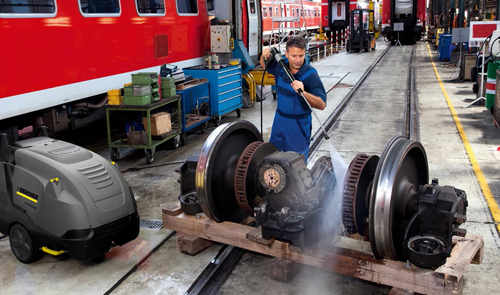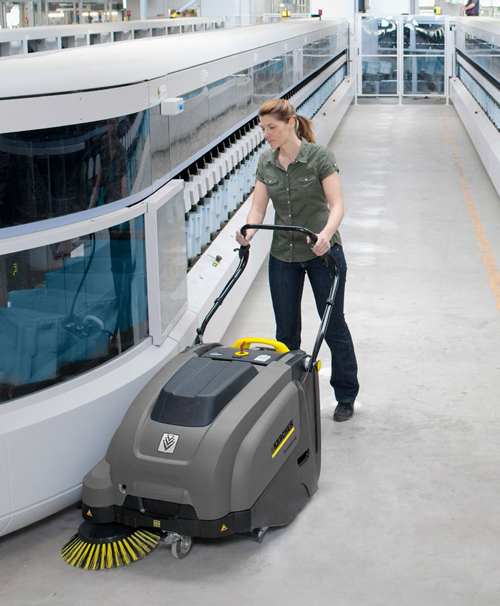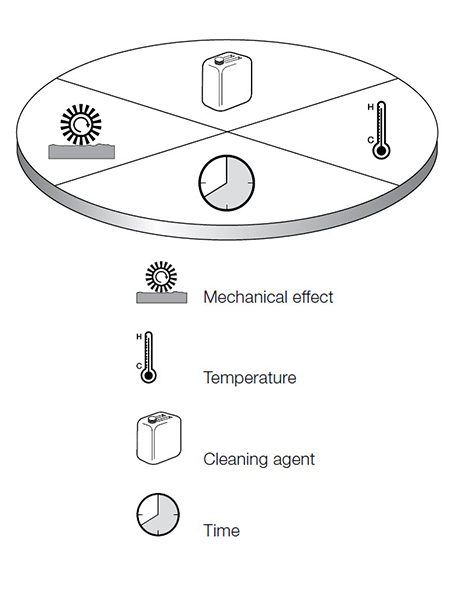Lorchem Learning Center | Basic Cleaning Concepts
By learning the basic cleaning concepts, you will be able to choose the best type of cleaning method and the equipment required for your specific cleaning needs. Download the full whitepages here. Go back to the Lorchem Learning Center
Basic Cleaning Concepts
Article courtesy of Kärcher Academy: Basics of Cleaning
Definition of Cleaning: "Cleaning is the removal of all unwanted foreign substances on a surface”.
In doing so, it is important that the surface is not damaged. These foreign substances are called “dirt”. There are three types of dirt, namely:
- Coarse dirt (cans, cigarette packs, paper waste, leaves, etc.)
- Fine dirt (sand, dust, salts, soot particles, etc.)
- Liquid dirt (oil, water, solvents, etc.)
Cleaning also involves maintenance. For example, in many floor-cleaning situations, cleaning requires subsequent maintenance. This serves to ensure value retention of valuable floors (e.g. marble, travertine, linoleum). Products are applied to the surface that give a protective coating to the surface for an extended period of time. Disinfection may also be part of the cleaning process. This prevents the growth of microorganisms. The end result is always cleanliness.
 Why Clean? Why Clean?
The reasons why we want to clean something are as follows:
- Fulfilling basic legal conditions to prevent diseases,
- Extending the life of the object to be cleaned or the machine to be cleaned (reduction of oxidation/rust),
- Improving industrial hygiene,
- Improving occupational safety,
- Ensuring a consistent production quality,
- Enabling better diagnosis of damages,
- Improving the aesthetic appearance,
- Improving image or status.
From the Initial Condition to the Cleaning Objective
The task of cleaning: You start with a given initial condition (the soiled state), use the most efficient cleaning method to reach the required cleaning cleaning objective.
Initial Condition: Type of soiling, type of dirt. Examples of soiling are lime scale, salts, dust, sand, oil, grease, urinal deposits, and proteins. The level of attraction between the dirt and the surface is also important.
Cleaning Method: The cleaning method is the technique used to clean, i.e. with a machine, for example a high-pressure cleaner, or manually.
Cleaning Objective: This is usually the end condition, as defined by the client, which must be fulfilled after cleaning has been completed. There are different types of cleanliness.
- Visually clean: Dirt can no longer be seen with the naked eye.
- Bacteriologically clean: Free from living microorganisms.
- Physically clean: Dirt is no longer visible, even if examined with a magnifying glass or microscope.
- Chemically clean: Free from oxides and chemical substances.
Back to Top
Types of Dirt Adhesion
In the “Initial condition” section we only mentioned the dirt. But to be able to provide good advice, you must also know how the dirt adheres to the surface.
Electrostatic bonding (adhesion); Example: Dirt film on car paint: The bonding occurs thanks to the force of attraction between opposite charges of molecules of different substances. To break this bonding, water must be introduced between the dirt particle and the surface. This is possible by reducing the surface tension of water, e.g. by adding surfactants
Mechanical bonding / interlocking; Example: Clay on grating: In this instance, the bonding is caused by the fact that the dirt is initially soft and subsequently hardens on the uneven surface. In order to remove this dirt it must be broken down. The force required to break the dirt depends on its hardness.
Chemical bonding / chemical compound; Example: Oxidation film on aluminium: The surface looks dirty because the substance has undergone a chemical change, oxidation. The dirt film is removed by:
- Reversing the chemical change in substance by heating, or
- A modified chemical reaction, e.g. stripping, or
- Mechanical removal of the layer, e.g. by sanding/grinding, chafing/scrubbing.
Back to Top
 Selection Criteria for the Cleaning Method Selection Criteria for the Cleaning Method
The selection of the most suitable cleaning method depends on 7 factors:
1. The type of surface to be cleaned
- Material: What is the object to be cleaned made of and what is it sensitive to?
- Dimensions: How large is the object to be cleaned?
- Quantity: Does it involve a single item or a whole string of objects?
- Is the surface smooth, rough or porous?
2. The costs: Is it a one-off cleaning process or does it continuously recur? Does it involve:
- Maintenance cleaning?
- Intermediate cleaning?
- Deep cleaning?
- Are hardship allowances incurred (e.g. night-time or Sunday work)?
3. Location: Where does the cleaning need to be carried out? For example, is there a washing area available? Accessibility (door widths, ramp, corridor widths, lifts)?
4. Transport: Does the object to be cleaned need to be transported? Size? Weight?
5. Time: Is the cleaning part of a production process? How long may the cleaning process take and at what time of day does it take place?
6. Personal deployment: Who does the cleaning? Man, woman, specialist or third party? Does the cleaning have to be carried out semiautomatically?
7. Environmental provision
Are cleaning agents used? If yes, which?
- Toxicity (poisonousness) of the cleaning agent
- Odour of the cleaning agent
- In which environment (surroundings) is the cleaning carried out?
- Is there a risk of fire or explosion?
What disposal facilities are available:
- Must an oil or petrol trap be provided?
- Or does the water have to be cleaned more intensively?
Back to Top
Sinner's Cleaning Circle
In cleaning, the final result is influenced by 4 interdependent factors, represented in the Sinner Circle. If one factor is reduced, the loss must be compensated for by increasing one or more other factors.The 4 factors that are relevant for cleaning are:
 Mechanical Effect: This is very important for the cleaning if widespread or stubborn dirt is involved. Mechanical effect is that of a certain (physical) force. For example, this can be the force of a high-pressure jet or of a brush, as well as the force of a sponge on a given surface. Mechanical Effect: This is very important for the cleaning if widespread or stubborn dirt is involved. Mechanical effect is that of a certain (physical) force. For example, this can be the force of a high-pressure jet or of a brush, as well as the force of a sponge on a given surface.
Temperature: At a higher temperature dirt becomes thinner or less viscous (e.g. grease) and is thus removed from the surface. Higher temperatures generally result in timesavings, especially when it comes to removing oily or greasy dirt.
Chemical Effect: The chemical effect is achieved by the use of cleaning agents that:
- Reduce the surface tension of the water
- Reduce the bonding forces between the dirt and surface
- Enable dirt to swell or dissolve it
- Emulsify water-insoluble dirt in the cleaning solution in order to transport it away
Time: We differentiate between reaction time and processing time. The reaction time (soaking time) assists the cleaning process in that the cleaning agent and temperature are given time to penetrate and soften the dirt, as a result of which the bonding or adhesive forces between the dirt and surface lessen. The spraying of an agent and reaction time is followed by the pro cessing time in which the dirt is usually mechanically removed, i.e. with brushes or high-pressure. The processing time is affected by the speed at which a person or tool works and the tool width, i.e. it is shorter when working at higher speeds or when using larger tool widths.
Cleaning Terminology
Maintenance Cleaning: Regularly (daily or weekly) recurring cleaning in which a condition recognised as “normal” is achieved, e.g. free of dust and footprints. After a while, the maintenance cleaning is no longer sufficient and a more thorough cleaning must be considered.
Intermediate Cleaning: This type of cleaning is carried out if maintenance cleaning alone no longer produces the required result.
Deep Cleaning: In deep cleaning, everything is done to remove all existing dirt as thoroughly as possible.
Back to Top
Download the full whitepages here. Go back to the Lorchem Learning Center
|


 Why Clean?
Why Clean? Selection Criteria for the Cleaning Method
Selection Criteria for the Cleaning Method